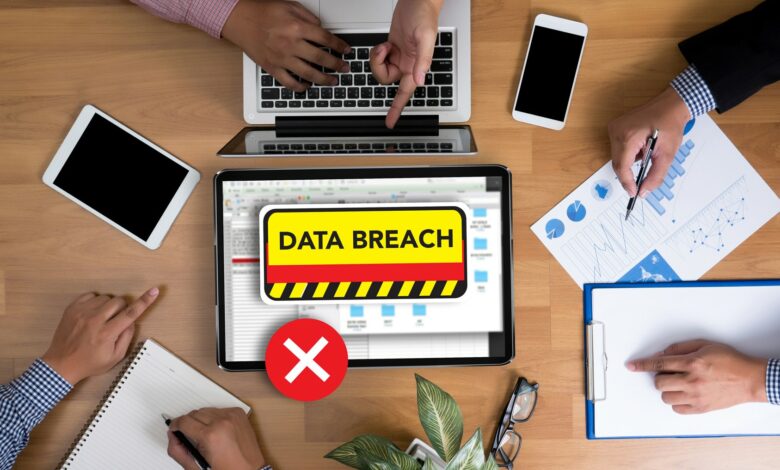Maintaining business data security in the remote work era

Remote work has now become an integral part of the work environment. Before the pandemic, only a small number of companies integrated such opportunities for their employees. Now, the work-from-anywhere lifestyle has been adopted by thousands. Additionally, candidates are no longer eager to join companies prioritizing office work.
Essentially, remote work got a major push during the pandemic, and now around 61% of employees prefer full-time remote work.
The businesses got a chance to increase their ROI by spending less on infrastructure due to less physical attendance. The same way the employee got to work from the comfort of their home, which helped in increased productivity.
Further, at present, the trend is increasing with speed day by day. But one concern is also rising. Businesses are looking for ways to keep their data secure. The rise in ransomware attacks, phishing scams, and other cyber threats has made it mandatory for companies to take necessary security measures.
This article will discuss some famous methods that can help keep the business secure while employees work from home.
Ways to keep the business secure
There are several ways to keep the business secure while employees work from home. Following are some of the most famous methods:
Use A Virtual Private Network
A Virtual Private Network is software that creates an encrypted and secure connection between your device and the remote server. It helps in protecting your data from being intercepted by hackers.
Thus, instructing employees to download VPN services is essential in ensuring that they always use a secure network to conduct business. After all, remote work is not restricted to home networks, which can be relatively well protected. In many cases, employees will travel and work while connected to free Wi-Fi at hotels, airports, or other public locations. Such actions can expose the data they share, and a VPN can ensure that no data interception occurs.
Educate your employees about security risks
Employees of your company should be aware of the potential security risk associated with remote work. They should know how to identify phishing emails, spot malware, and use strong passwords. You can provide them with resources and training to help them stay up to date on the latest threats.
Usually, it is best to include cybersecurity training for every employee that joins your company. A step further would be to hold similar sessions for other teams to inform of any changes or detected attacks.
Advise employees to install anti-virus
Ensure your employees install sophisticated anti-virus software on their devices and keep it up to date.
It’s one of the most compelling ways to protect your computer from viruses. Most anti-virus programs come with an auto-update feature that automatically updates the program without any user intervention. Ensure you have an active anti-virus program installed on your employees’ computers and keep it updated.
Create a security policy
Develop and implement a security policy that covers all aspects of remote work. The policy should include guidelines on using devices and applications safely, storing and sharing data, and protecting against cyber threats.
Enforce two-factor authentication
Two-factor authentication is an effective way to secure accounts and prevent unauthorized access. It adds a layer of security by requiring users to enter a second factor, such as a code sent to their phone, in addition to their username and password.
You can enable two-factor authentication for all employees or only those who have access to sensitive data.
Sign an NDA with employees
If you are sharing confidential data with your employees, it is a good idea to sign a Non-Disclosure Agreement (NDA) with them. The NDA should consist of stringent rules that convey the repercussion of handling data carelessly. It will protect your data from being stolen or leaked to the public or competitors.
Keep different passwords
Individuals are generally the most significant source of risk. To avoid this, enforce unique passwords for different systems and keep them complex.
It will make it difficult for hackers to access multiple accounts with the same password. You can even build a system where access to one set of high-level password credentials and penetration into one area of your network does not spread unchecked.
Regularly backup data
Backing up data regularly is one of the most critical security measures you can take. It protects your data from being lost or corrupted in the event of a system failure or malware attack. Make sure to backup data regularly and store the backups in a safe and secure location.
Ensure encryption between remote workers and office network
Encryption is the process of transforming readable data into an unreadable format. It makes it difficult for hackers to access and exploit the data. You can use encryption to protect your data when transmitted between remote workers and the office network. You can also use encryption to protect data stored on employee devices. Plus, it will ensure that the employees use the company’s tools for work only and don’t misuse it.
Use zero-trust access (ZTNA) policy
Zero-trust access is a security model that does not trust any user or device on the network. All users and devices are treated as potential threats.
This policy requires all users to authenticate and authorize before accessing the network. This makes it difficult for hackers to gain unauthorized access to the network.
Conclusion
The remote work option is, without a doubt, a gift. However, as with all commercial activities, there is always the risk of a “two-edged sword” element to consider. One of the most significant concerns about working from home is keeping your company safe. Make sure that when you take charge of your business in the brave new era ahead, you are following the guidelines listed above for fundamental cybersecurity.




